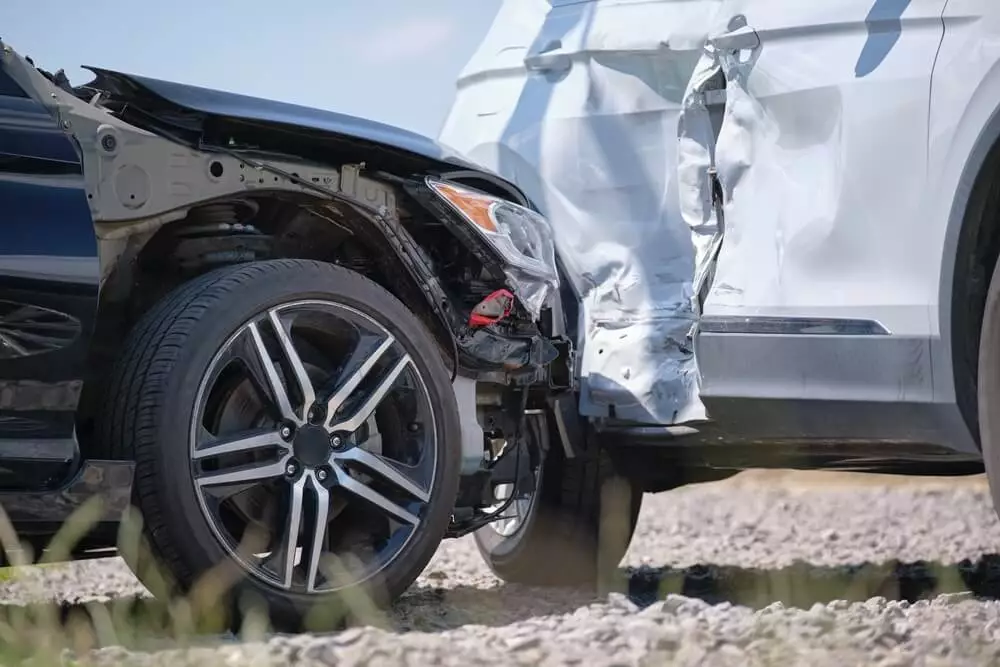A T-bone accident can cause severe injuries, especially to the driver who absorbs the bulk of the impact. But how do these accidents happen and, most importantly, who is responsible? We look at T-bone accident liability and what compensation you could be entitled to if you’re in one of these accidents.
Areas in Greater San Antonio We Serve
What Is a T-Bone Accident and How Does It Happen?
A T-bone accident has many names. It may also be referred to as a:
- Side-impact collision
- Angle collision
- Broadside crash.
Whatever you hear it called, the definition is the same.
A T-bone accident happens when the front of one vehicle crashes into the side of another. The perpendicular angle resembles a “T” shape, hence its common name, “T-bone”.
These accidents commonly happen at intersections when a driver ignores a red light or stop sign and drives through just as another vehicle approaches from the other direction. They can also happen if a driver suddenly turns in on incoming traffic, resulting in that car bearing the brunt of the impact.
Common Injuries Sustained in T-Bone Car Accidents
T-bone accidents can be particularly dangerous or even fatal, especially if a person is sitting on the side that sustains the impact.
It’s common for victims of T-bone accidents to sustain injuries including:
- Concussion: Concussion is a mild traumatic brain injury (TBI) that happens due to a sudden and forceful blow to the head, which causes the brain to collide with the skull. While it usually causes temporary effects, including a headache and blurred vision, it can affect victims over the long term.
- Whiplash: Like concussion, whiplash occurs due to a sudden jolt. This neck injury can result in ongoing soreness and headaches. Symptoms usually improve, but they can also cause long-lasting severe symptoms affecting memory, concentration, and range of motion.
- Broken bones: Fractures can occur in any car accident, but the body is especially vulnerable in a T-bone crash, as the side of a car offers very little protection. Older vehicles may lack reinforced beams and side airbags entirely. Broken bones may heal improperly and require surgery, and even after treatment, victims may continue to experience weakness or a physical deformity.
- Spinal cord injuries: These injuries often occur in an accident that causes a blow to the neck. As a result, they’re common in T-bone accidents. In severe cases, the nerves in the back may be permanently damaged. The nerves carry messages from the brain to the body, so they can cause tingling, numbness, or even paralysis when damaged.
- Death: Sadly, T-bone accidents can be fatal. This often happens when the vehicle that absorbs most of the impact is a lot smaller or lighter than the other vehicle. Side-impact collisions are a common type of truck accident, and if a truck crashes into a passenger car at high speed, the fallout can be catastrophic. Motorcycles are also at risk of fatal injury in a T-bone accident, as the impact can throw a motorcyclist off their bike and into other traffic.
T-bone accident victims don’t just cause physical injuries, though. Many face severe mental anguish, including depression and anxiety, due to the trauma.
T-Bone Accident Liability: Who’s Responsible?
While a T-bone accident is commonly the fault of a driver, it’s not always the case. So who else can be responsible? Let’s break down T-bone accident liability and the different parties that could be involved.
How T-Bone Accident Liability Is Determined
To understand how a party can be found at fault, it’s worth quickly looking at how the law defines liability in a personal injury claim.
To successfully claim compensation, the plaintiff (or person filing the claim) must prove that the other party acted with recklessness or negligence.
This is why individuals who cause an accident because they were driving were intoxicated or texting on their phone can be party to a civil claim — their actions (or sometimes, lack of) constitute driving recklessly or being wilfully ignorant (negligent) of the impact of their actions.
The Driver
Most commonly, the driver who T-bones another will be liable for the accident. This is often the case in T-bone accidents that happen at intersections.
For example, if you’re at an intersection on a green light and continue through — as is right and legal — but another approaching from the other direction fails to stop at the red light and plows into the side of your car, the driver of the vehicle at the bottom of the “T” is likely at fault.
If you’re in the reverse situation and drive head-on into the side of a car that passes through an intersection because they run a stop light, the other driver will be at fault.
Liability is usually clear-cut in a T-bone accident, but there may be times when the other driver disputes fault.
For example, if you turn to come onto the lane and the driver of the second vehicle continues driving, causing you to collide, the other driver may claim they have the right of way — essentially the right to proceed. Proving who has the right of way can be tricky, so it’s vital to speak to a car accident lawyer who can help gather evidence and fight your corner.
Another Driver
More rarely, another driver entirely may be liable for a T-bone accident. For example, a car might make an improper turn, causing you to take evasive action. In doing so, you crash into the side of another car. The driver of the final car impacted might assume you are liable for the accident. Still, in this case, the fault lies with the initial driver who started the chain reaction of events, even if they escaped the accident without hitting a single vehicle.
A Vehicle Manufacturer
Driver error is the most common cause of car accidents, but vehicle error does account for a smaller number of crashes. If a car crashes into the side of your vehicle at an intersection because their brakes failed due to an auto defect and they couldn’t stop, you may be able to claim compensation from the brake manufacturer.
What Compensation You Might Be Entitled to after a T-Bone Accident
We’ve already covered the potentially severe injuries a T-bone car accident can cause. Many victims who sustain such injuries — and those who are fortunate to walk away with a few bumps and bruises — end up with mounting medical bills and needing time off work. But the burden shouldn’t be on a victim who played no role in causing the accident. A compensation claim can help these individuals recover expenses caused by their injuries and additional damages for long-term costs and pain and suffering associated with the accident.
The damages you may be entitled to include:
- Medical bills, including costs for surgery and medication, emergency room fees, and expenses related to additional scans or tests you need
- Property damage to your car
- Lost wages
- Future medical costs
- Physical therapy or other rehabilitation to support your recovery or help you manage your injuries
- Pain and suffering
- Mental anguish
- Loss of enjoyment.
It’s vital to keep records of any expenses you’ve incurred so far, as a personal injury lawyer will use these to support your claim and negotiate a fair settlement with the party liable for the T-bone accident.
If you’ve been in a T-bone car accident that wasn’t your fault and want to know if you have a claim, contact our compassionate and experienced personal injury lawyers in McAllen and San Antonio for a free, no-obligation case review. You won’t pay a fee until we win your case, so seeing if you have a claim is entirely risk-free.

